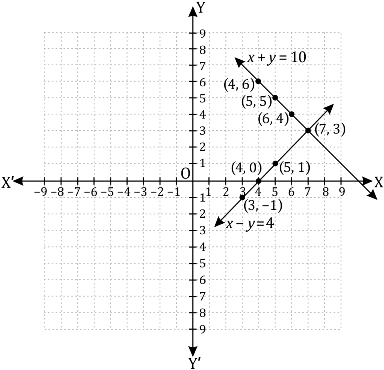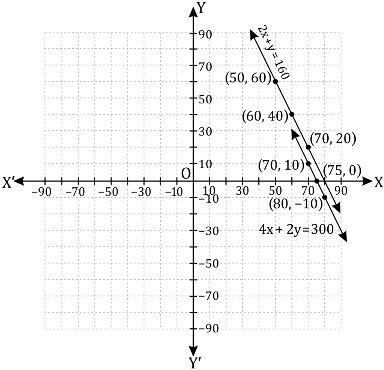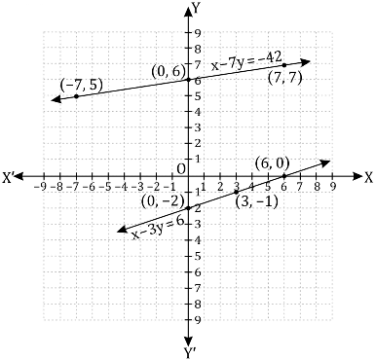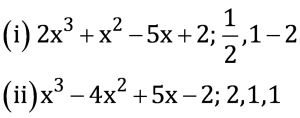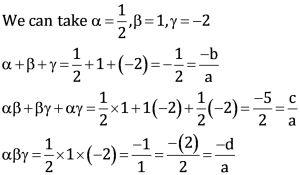Question 2:
Form the pair of linear equations in the following problems, and find their solutions (if they exist) by the elimination method:
(i) If we add 1 to the numerator and subtract 1 from the denominator, a fraction reduces to 1. It becomes 1/2. if we only add 1 to the denominator. What is the fraction?
(ii) Five years ago, Nuri was thrice as old as Sonu. Ten years later, Nuri will be twice as old as Sonu. How old are Nuri and Sonu?
(iii) The sum of the digits of a two-digit number is 9. Also, nine times this number is twice the number obtained by reversing the order of the digits. Find the number.
(iv) Meena went to bank to withdraw Rs 2000. She asked the cashier to give her Rs 50 and Rs 100 notes only. Meena got 25 notes in all. Find how many notes of Rs 50 and Rs 100 she received.
(v) A lending library has a fixed charge for the first three days and an additional charge for each day thereafter. Saritha paid Rs 27 for a book kept for seven days, while Susy paid Rs 21 for the book she kept for five days. Find the fixed charge and the charge for each extra day.
Answer:
(i)Let the fraction be x/y.
According to the given information,

Subtracting equation (1) from equation (2), we obtain
x = 3 (3)
Substituting this value in equation (1), we obtain
3 − y = −2
−y = −5
y = 5
Hence, the fraction is 3/5.
(ii)Let present age of Nuri = x
and present age of Sonu = y
According to the given information,
(x – 5) = 3(y – 5)
x – 3y = −10 (1)
(x + 10) = 2(y + 10)
x – 2y = 10 (2)
Subtracting equation (1) from equation (2), we obtain
y = 20 (3)
Substituting it in equation (1), we obtain
x − 60 = −10
x = 50
Hence, age of Nuri = 50 years
And, age of Sonu = 20 years
(iii)Let the unit digit and tens digits of the number be x and y respectively. Then, number = 10y + x
Number after reversing the digits = 10x + y
According to the given information,
x + y = 9 (1)
9(10y + x) = 2(10x + y)
88y − 11x = 0
− x + 8y =0 (2)
Adding equation (1) and (2), we obtain
9y = 9
y = 1 (3)
Substituting the value in equation (1), we obtain
x = 8
Hence, the number is 10y + x = 10 × 1 + 8 = 18
(iv)Let the number of Rs 50 notes and Rs 100 notes be x and y respectively.
According to the given information,
x + y = 25 (1)
50x + 100y = 2000 (2)
Multiplying equation (1) by 50, we obtain
50x + 50y = 1250 (3)
Subtracting equation (3) from equation (2), we obtain
50 y = 750
y = 15
Substituting in equation (1), we have x = 10
Hence, Meena has 10 notes of Rs 50 and 15 notes of Rs 100.
(v)Let the fixed charge for first three days and each day charge thereafter be Rs x and Rs y respectively.
According to the given information,
x + 4y = 27 (1)
x + 2y = 21 (2)
Subtracting equation (2) from equation (1), we obtain
2y = 6
y = 3 (3)
Substituting in equation (1), we obtain
x + 12 = 27
x = 15
Hence, fixed charge = Rs 15
And Charge per day = Rs 3








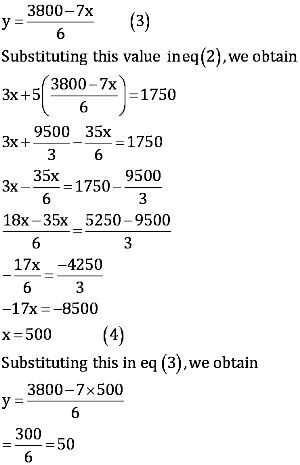


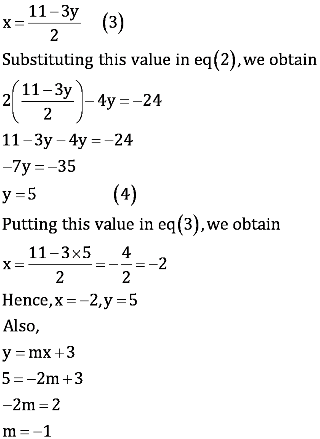



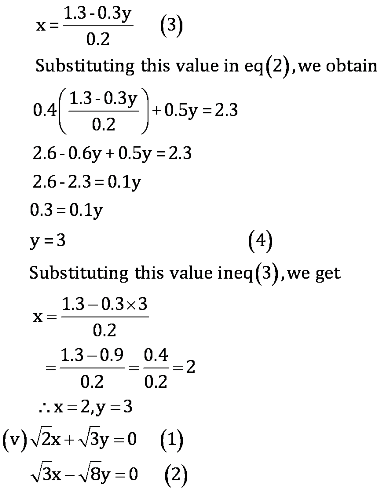






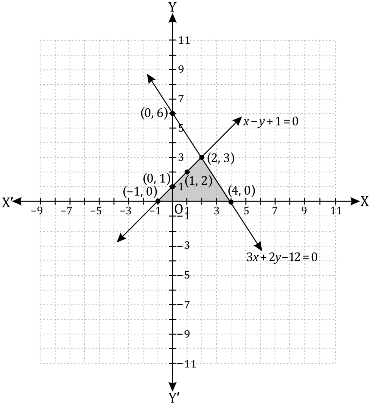

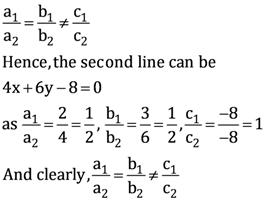



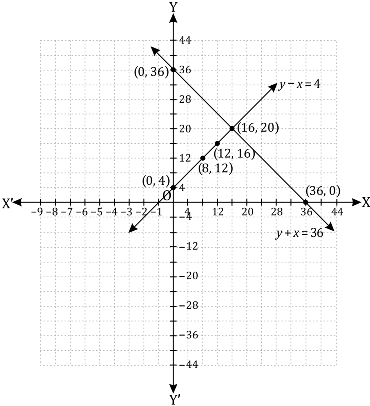




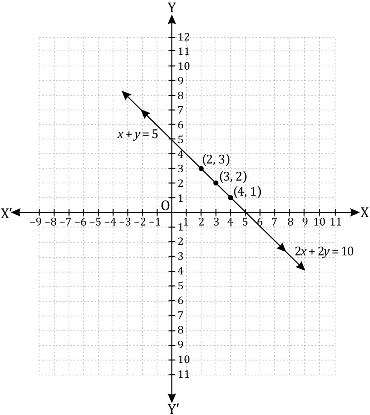







 find out whether the following pair of linear equations are consistent, or inconsistent.
find out whether the following pair of linear equations are consistent, or inconsistent.











